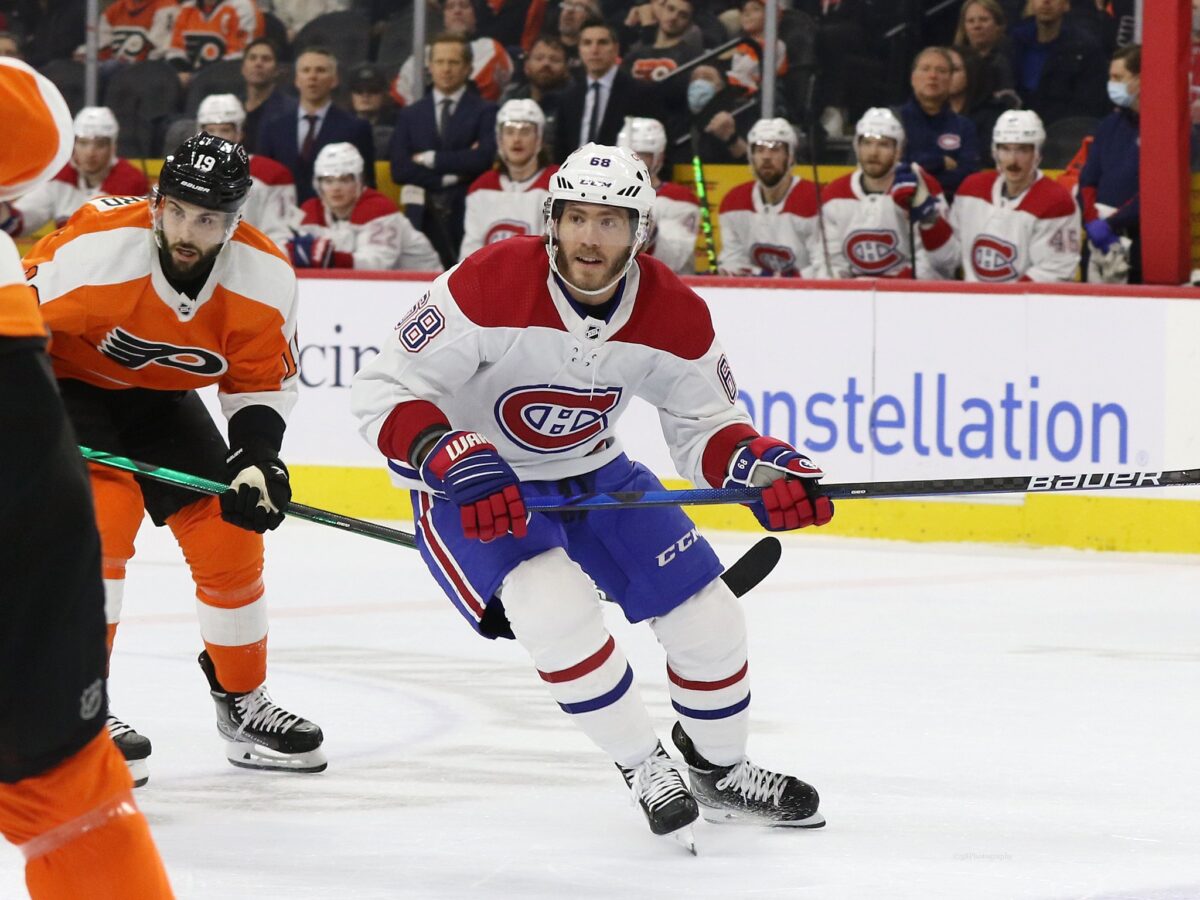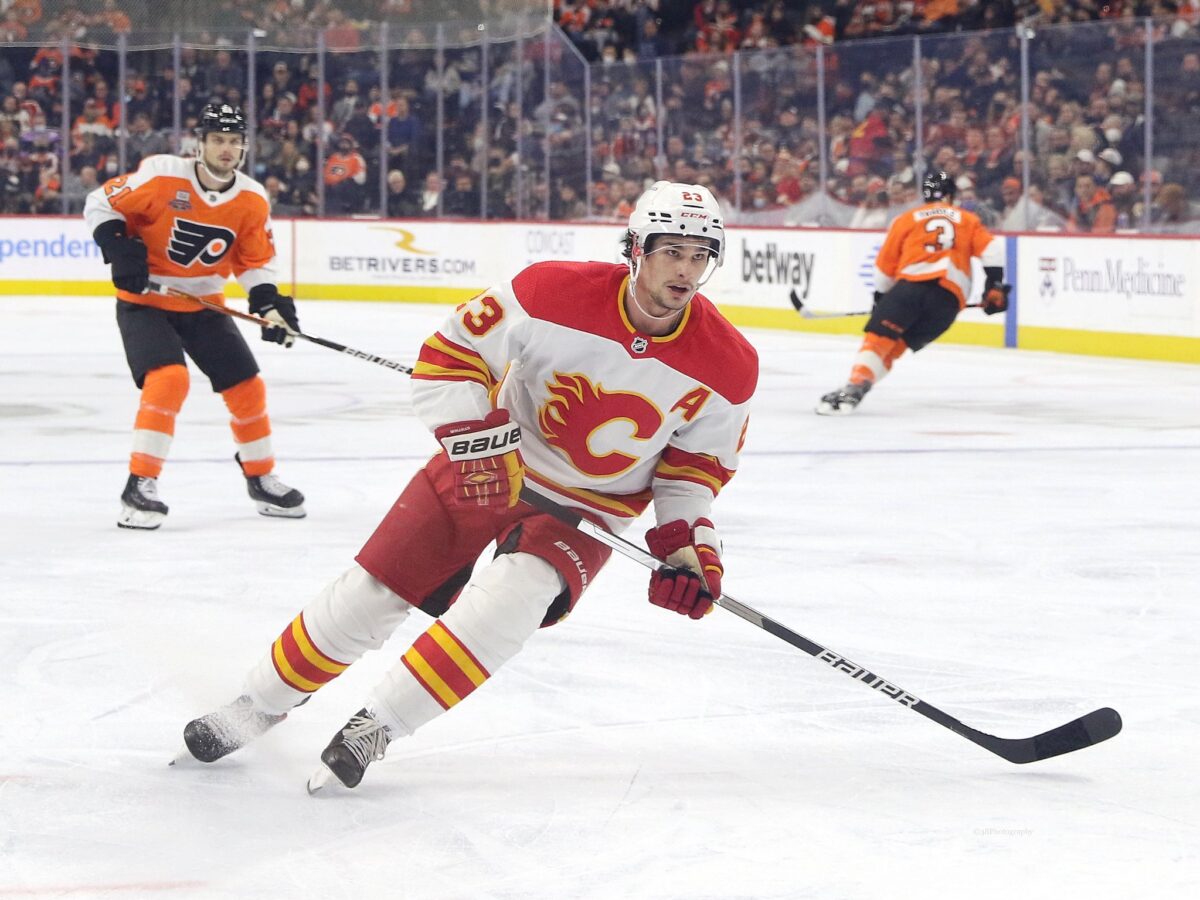The Montreal Canadiens are safely into a rebuild cycle. General manager (GM) Kent Hughes has been very busy in the nine months he’s been at the helm of the iconic hockey franchise. With a prospect pool of approximately 42 players drafted within the last four draft cycles, the prospect pool is deep and has potential. Added to that, the Habs hold 11 picks in the 2023 Draft, making it possible for management to start to focus on trading for the best quality returns as opposed to holding on to future picks as most rebuilding teams do.
Canadiens Set Trade Dominos
One of the attributes that Hughes has demonstrated so far in his short tenure is patience. He has been willing to wait for the return in any deal to meet the value he has set for an asset, similar to how he did with the Artturi Lehkonen trade. The issue now is that the value of players the Canadiens are willing to trade may not be that high. Just trading out cap and opening up roster spots and available contract space under the maximum 50 allowable contracts is helpful.

However, Hughes’ rebuild plan isn’t going to find an elite player or be shortened without the help of the coaching staff. Player valuation between now and the trade deadline will rest on how well head coach Martin St. Louis and his staff can rehabilitate or elevate the play of these players.
It is unlikely that any teams will be wheeling and dealing going into training camp as they have players and prospects they want to assess internally. Not to mention, the salary cap is not just an issue for the Canadiens, but it is one that teams across the league are struggling with. What Hughes must prepare for is a contending team with injury issues that provide an unexpected market and of course, prepare for the trade deadline.
Related: 3 Burning Questions Heading into Canadiens Training Camp
While Hughes has done well in the rebuild thus far, he does have years of heavy lifting ahead of him. He will need to target the best return possible for each asset, but what does that look like for Montreal? First-round picks, good prospects and/or good young roster players are on that list. However, one item that Hughes should be targeting is a possible future starting goaltender. While Cayden Primeau shows promise, putting all of the organization’s eggs in one basket isn’t the best decision.
Dynamic Trade Targets
Dynamic targeting in the context of a rebuild involves players who were not originally identified as an immediate need to trade. With these players, the nature of their contract/age/value and sudden or unexpected interest from another team typically means that a deal requires an immediate decision. For these types of deals, it is important for management to perform some pre-planning in the form of setting a range on trade value. While patience is a virtue, so is decisiveness and in these types of deals, preparedness is what pays off. When used in hockey terms, it points to a player that has term remaining on their contract or provides depth on a contending team.
Joel Armia
Joel Armia is a good piece to add to a contending team, as he has shown his value in a Stanley Cup run with his ability to play a puck possession style and win puck battles along the boards. However, for a team in a rebuild, he is too expensive and holding up a roster spot that could be better used for a young player to move up from the American Hockey League (AHL) and gain experience. The 29-year-old winger has three more seasons at $3.4 million. His value isn’t very high, however, it could be possible to gain a prospect or young depth player.
Mike Hoffman
Mike Hoffman is the popular choice among the fan base to be traded out for a variety of reasons. He’s a luxury depth player that simply isn’t needed in Montreal. What he can provide is depth scoring in a middle-six role, as well as to be used as a shooting weapon on a serviceable power play.

The 32-year-old winger has two more seasons remaining on his contract at $4.5 million. His value is fairly low, however, if St. Louis can rehabilitate his game and production, he could attract a top 90 pick or prospect.
Deliberate Trade Targets
Deliberate targeting pulls the trigger on a known target within a given area and timeframe. They would normally support future plans. In this context, it is players on expiring contracts that fit this type. Like the dynamic targets, this type requires pre-planning, as well, in regards to setting a minimum value. However, these don’t normally fit the definition of a sudden arising (a team having injuries and needing immediate help).
Jonathan Drouin
Jonathan Drouin has needed a fresh start for a while. It could be argued that he has gotten one each time a coaching change has been made. If that is the case, likely his last one as a Canadien will be when he suits up for St. Louis. The 27-year-old middle-six winger has entered his last year of a deal paying him $5.5 million per season. If he can rediscover his game and not fall prey to injuries yet again this year, he may be able to increase his trade value to a level that could provide one quality asset included in a package as a return.
Evgenii Dadonov
Since returning to the NHL from a stint in the Kontinental Hockey League (KHL), Evgenii Dadonov has proven he is a sure-fire 20-goal scorer in the NHL. But he is at best a skilled complimentary style winger. The 33-year-old winger is in the last season of a deal paying him $5 million per season. All of this makes him an ideal candidate to become a trade deadline asset for the Habs to flip for assets. Currently, he’s the most valuable player ear-marked to be traded, and if he continues to play at his current level, he could net Hughes as high as a first-round pick in return.
Sean Monahan
The newly acquired Sean Monahan is an intriguing player. If he returns to form now that he has had both hips surgically repaired, he could become a player that the Habs could look to retain if he signs a team-friendly deal. If not, he could be of considerable trade value at the trade deadline.

It is possible that Monahan could allow Hughes to add another high-end asset to go along with the first-round pick he was given to take on the final year of the 27-year-old center’s $6.375 million per season contract. If so, for the cost of trading away the ever-popular “Future Considerations”, Hughes’ weaponization of the salary cap space provided by the misfortune of losing Carey Price may turn out to become his best deal of the summer.
The players and coaches will provide entertainment value, and the more the players improve to earn new contracts, the more competitive the team becomes, which in turn raises the value of any trade Hughes could demand. Canadiens fans understand that the club is in the early stages of a rebuild cycle, so there is no pressure on management to immediately improve. This allows the luxury of time for Hughes, who can set values on assets and have the patience to wait for a rival GM to meet his set price.
